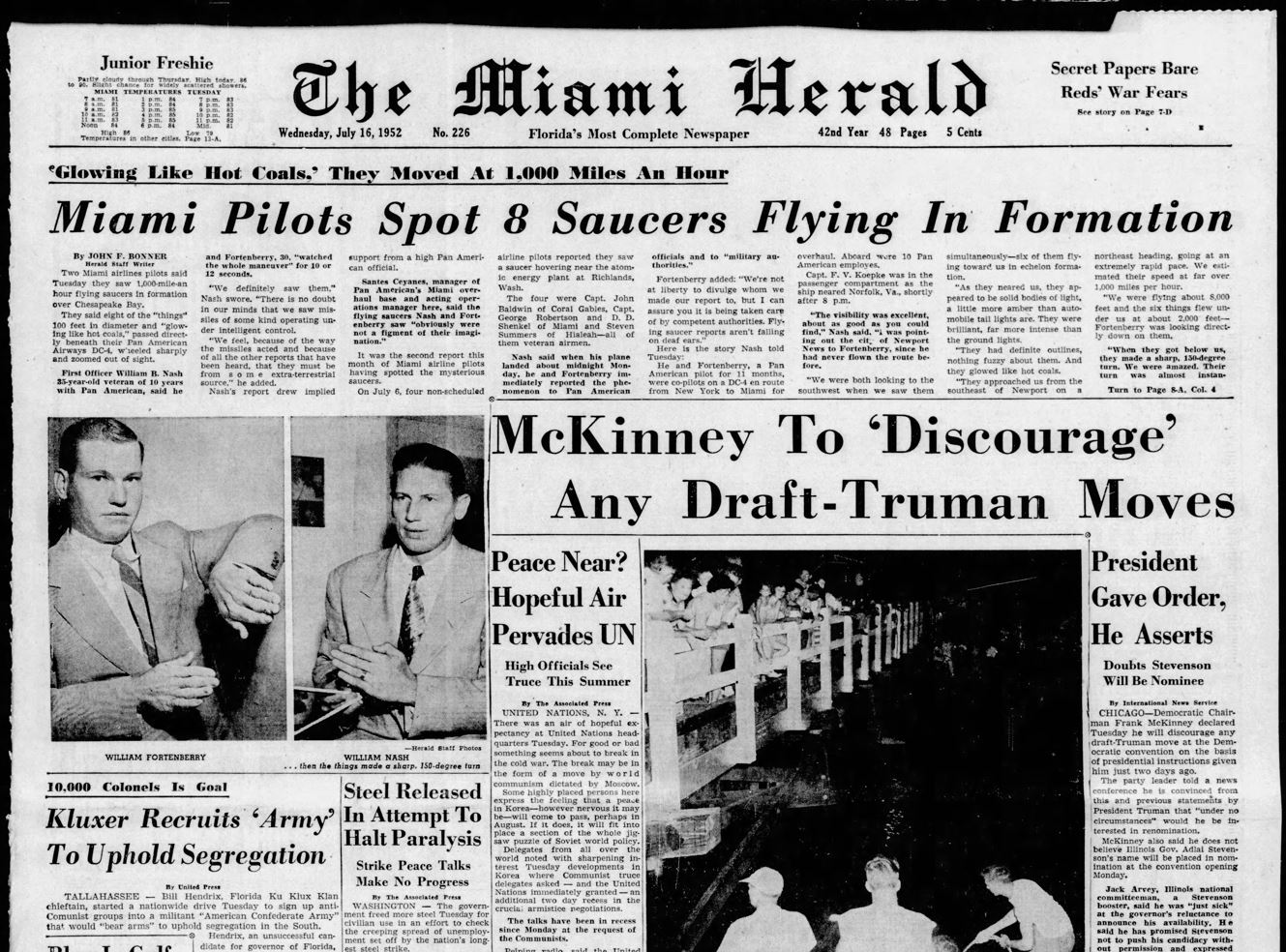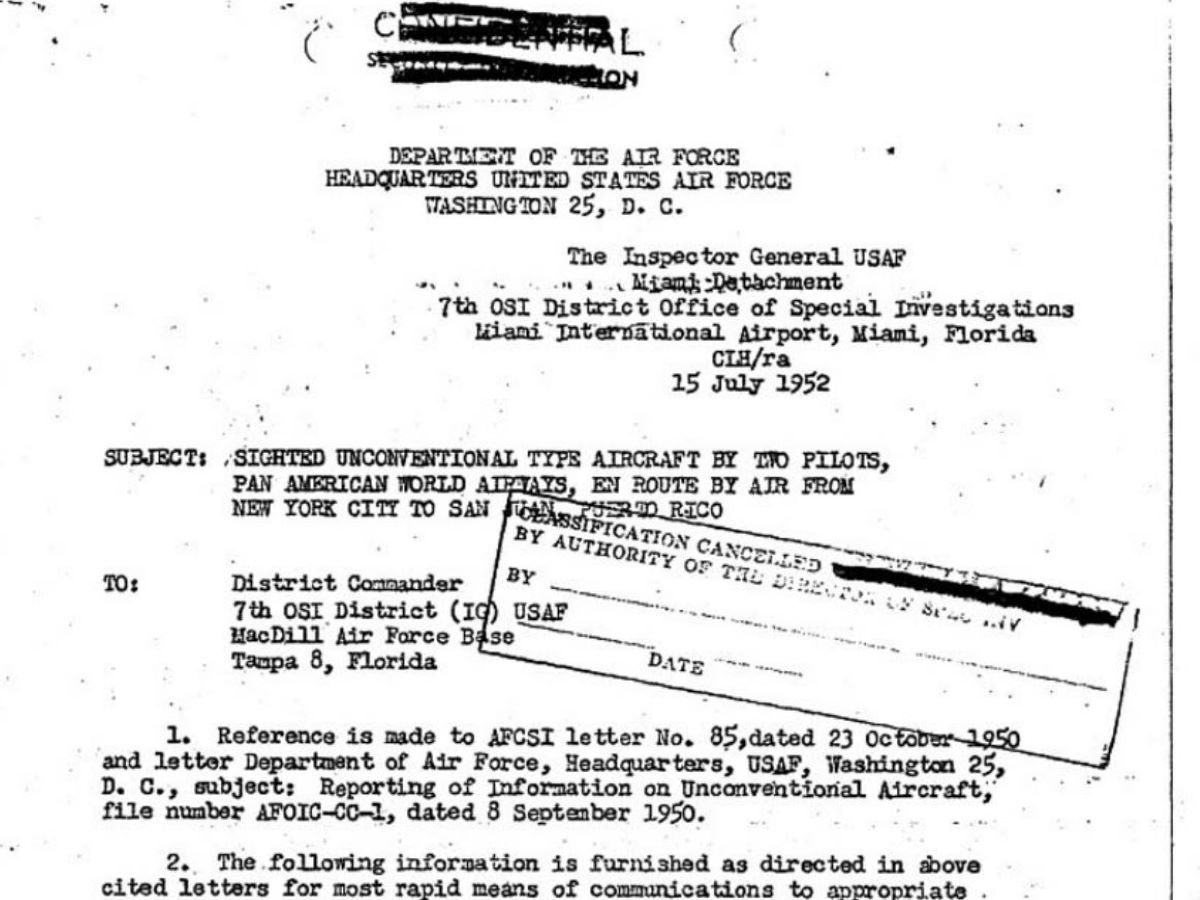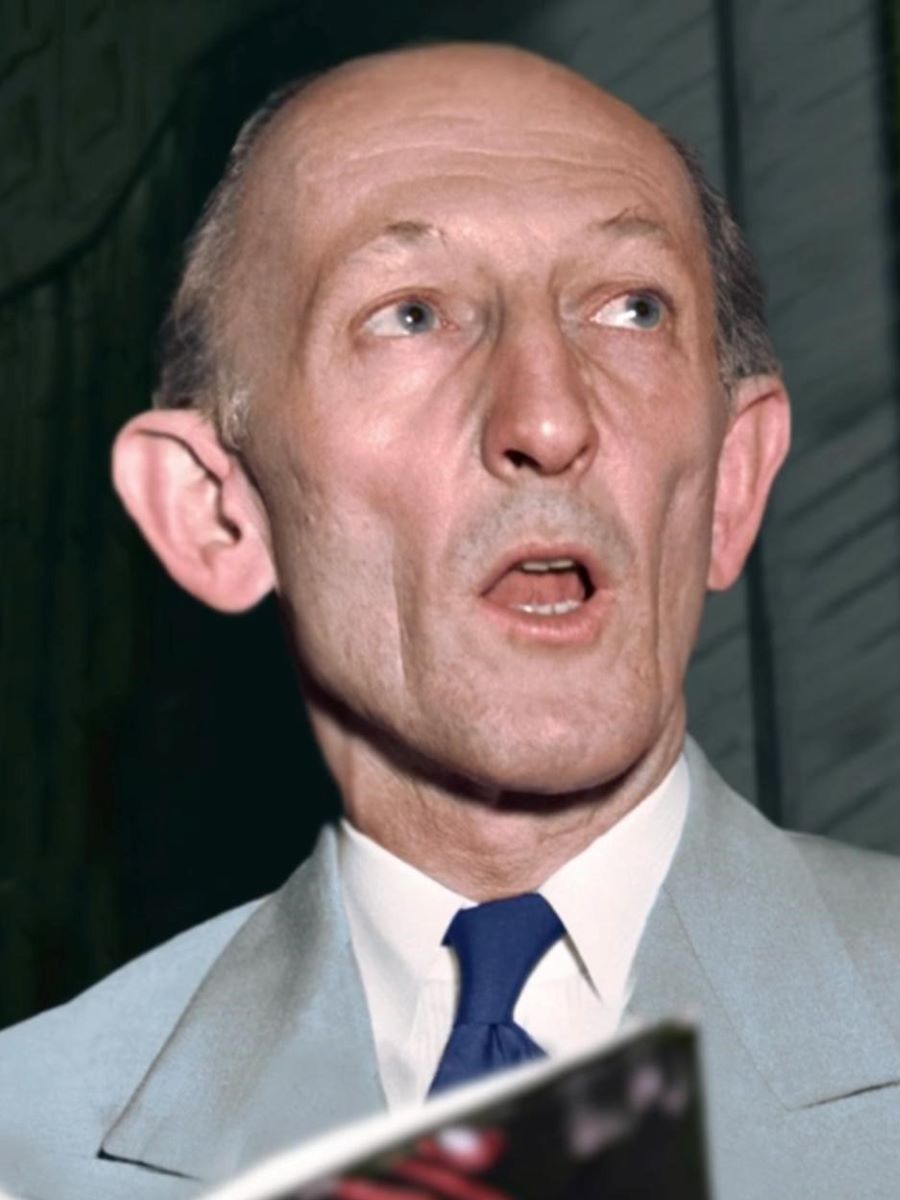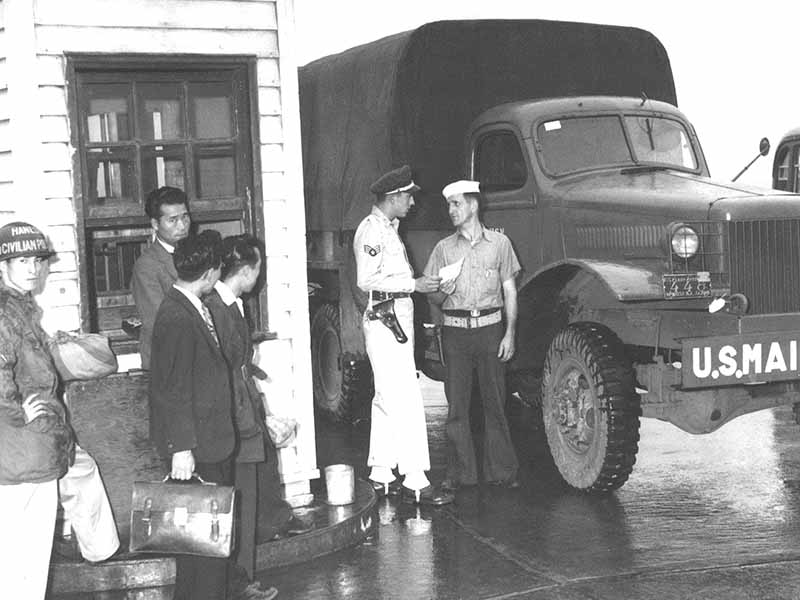Nash-Fortenberry UFO Sighting
Pilots William B. Nash and William H. Fortenberry witnessed a group of eight brightly lit, saucer-shaped objects fly in formation over Chesapeake Bay. This case was officially classified as "unknown" by Project Blue Book and has been cited as a UFO incident that contributed to the U.S. military taking UFOs more seriously.
On the night of July 14, 1952, Nash and Fortenberry were part of a three man crew piloting a Pan American World Airways DC-4 from New York to Miami. Captain Fred Koepke was doing some paperwork in the forward passenger cabin, with Nash and Fortenberry in the two pilot's seats.
At 8:12pm, as the plane was approaching Norfolk, Virginia over the Chesapeake Bay, the pilots were surprised by six bright objects moving at "tremendous speed, and obviously well below us." The pilots described the objects as being twenty times more bright than the ground and city lights below, with a shape that was "clearly outlined and evidently circular; the edges were well defined, not phosphorescent or fuzzy in the least. The red-orange color was uniform over the upper surface of each craft."[1]
Echelon Formation

Nash and Fortenberry estimated the saucer-shaped objects' diameter to be about 100 feet, about 15 feet thick, with a top lighted surface that seemed flat. They described the bottom surface and edges as unlit.
Two More Objects Join the Formation
At this point, two other similar objects became apparent, and appeared to be joining or closing in on the six in formation. Nash and Fortenberry recounted, "Then suddenly the lights of all of the objects blinked out, and a moment later blinked on again with all eight in line speeding westward, north of Newport News, and climbing in a far, graceful arc that carried them above our altitude. There they disappeared, while still in view, by blinking out one by one-not in sequence, but in a scattered manner...There had seemed to be some connection between the lights and the speed...The original six had dimmed slightly before their angular turn and had brightened considerably after making it. Also the two others were even brighter, as though applying power to catch up."
6,000 - 12,000mph

The plane continued on its flight to Miami and landed a little after midnight. The next morning, Nash and Fortenberry were interviewed by investigators from the U.S. Air Force.
Attempts at Earthly Explanations
In 1962 Donald Menzel reinvestigated this case as part of his book "The World of Flying Saucers: A Scientific Examination of a Major Myth of the Space Age." Menzel postulated that the objects could have been reflections inside the cockpit of the plane, a hostess taking a drag of a cigarette inside the plane, or a searchlight refracting through inversion layers below the plane. Nash forcefully rebutted Menzel's postulations, and to this day, this UFO incident remains a seminal case from the post-war period.

























